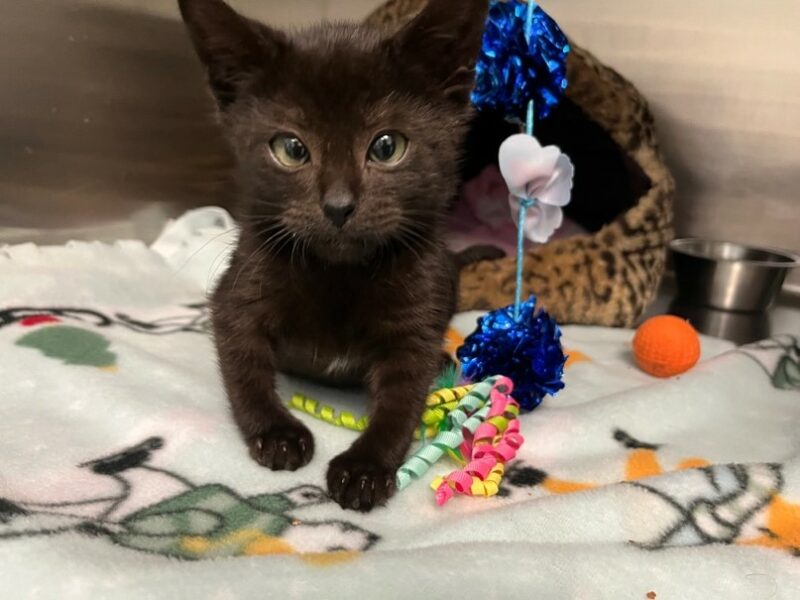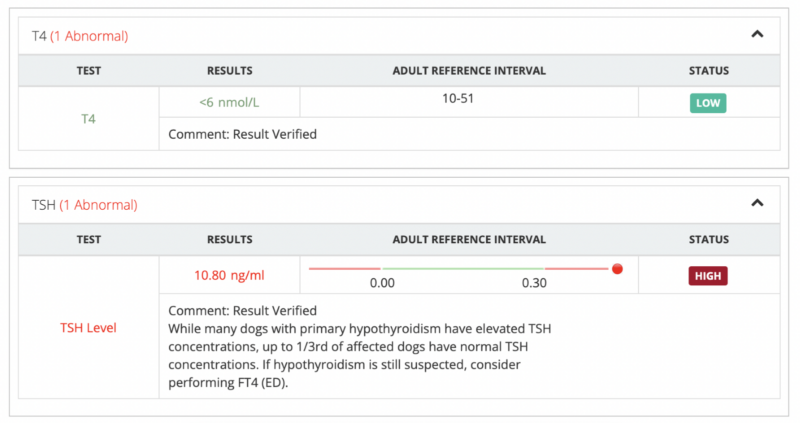By Dr. Tracy Satchell, Shelter Veterinarian, City of London
When people find out I’m a veterinarian, I’m often asked, “What’s your favorite animal?”. I should probably say that I love all animals equally or declare that I couldn’t choose just one because I love them all! But that’s not the truth, for me the answer is clear. Cats are my favorite animal. Yes, of course I love dogs too, but if I’m being forced to choose just one creature… it’s cats.
As a cat-enthusiast employed at a municipal shelter, my workday is often feline-focused, but the very best days are when I get to work with kittens. Is there anything better than a healthy, thriving kitten? (Let’s put overpopulation aside for the sake of my story, I swear I’m going somewhere with this!). Those tiny toe-beans, soft kitten fur, tiny sharp claws, and baby kitten purr. Sometimes I wish they would stay small forever so I could have an army of tiny, fluffy hellions terrorizing my house. Who needs curtains? Who needs a husband? KITTENS!!
Be careful what you wish for.
Meet Gargoyle, aptly named because he was hunched over straining to defecate when he was admitted to the shelter. We noticed that Gargoyle seemed small for his age and hadn’t yet erupted all his deciduous teeth. His legs were short, his head was big, and he didn’t have the usual amount of energy you would expect from a kitten.

I started to suspect that Gargoyle may have congenital hypothyroidism.
Feline congenital hypothyroidism is an inherited disease, historically considered a rare condition. However, disease incidence is likely underreported. Congenital hypothyroidism is becoming recognized as an undiagnosed cause of ‘fading kitten syndrome’ and death in kittens. Effected kittens are either born without a functional thyroid gland (thyroid gland agenesis) or have a defect in thyroid hormone production (dyshormonogenesis).
Either way, these kittens don’t make enough thyroid hormone.
Clinical Signs
When I think of thyroid hormones, I think of their effect on metabolic rate and visualize the old, fat, lazy, hypothyroid dog. Thyroid hormones influence many metabolic processes and are also associated with growth, central nervous system development, tissue turnover, and heart rate and contractility. Kittens lacking adequate thyroid hormone will commonly experience stunted growth, low energy, dental abnormalities, and constipation (sound familiar?).
They can also exhibit the following signs:
· Lethargy
· Mental dullness
· Disproportionate dwarfism:
- Large, wide head
- Short, wide neck
- Flat face with shortened jaw
- Short limbs
· Retention of kitten hair; coat remains soft and fluffy
· Delayed eruption or retained deciduous teeth
· Obstipation
· Bradycardia
· Hypothermia
· Seizures
· Delayed closure of physes
· Goiter (dyshormonogenesis cases)
Diagnosis
Definitive diagnosis can be made by measuring serum T4 and TSH; hypothyroid kittens will have low T4 and high TSH. Free or total T4 can be used. There is no specific feline TSH assay, but canine TSH (cTSH) can be used because it cross-reacts with feline TSH.
Suspected hypothyroid kittens are often small and sickly, so I’m not eager to steal their blood. Thankfully, these tests can be run on serum samples of around 0.5ml. I recommend that you reach out to your local diagnostic laboratory to inquire about minimum sample size and sample handling before collection.

This was Gargoyle’s blood results:
His low T4 and high TSH is pathognomonic for congenital hypothyroidism.
Treatment
“If you can’t make your own thyroid hormone, store bought will do.”
Synthetic levothyroxine is the drug of choice to treat hypothyroidism, dosed at 0.01-0.02mg/kg by mouth every 12 hours. This drug is best absorbed on an empty stomach. Difficult to medicate cats can be given 0.02-0.04mg/kg every 24 hours. There is no commercially available thyroid supplement approved in cats, but your local compounding pharmacy can prepare a flavored liquid to allow for easy administration and dosing adjustments as the kitten grows. Treatment is lifelong.
I’m a sucker for tiny kittens, so I took Gargoyle home and started him on levothyroixine at 0.02mg/kg every 12 hours (malt flavor was his favorite). We rechecked his weight and adjusted his dose every 2 weeks. Within one week his constipation resolved and Gargoyle’s name was then changed to something more fitting; Gary. Within 2 weeks Gary was rapidly gaining weight and becoming more energetic. After 4 weeks of treatment he was growing rapidly into a normally proportioned, robust kitten.
Gary became friends with my toothless calico, Suzie. In this picture, Suzie is teaching him how to beg for yogurt, as seen on his nose. [picture]

It is recommended to re-test T4 levels 2-4 weeks after the start of therapy and after each dose adjustment, ideally drawing samples 4 hours after medication administration. Working within the limitations of my shelter environment, I chose to delay further testing until his weight had stabilized and continued to monitor his clinical signs. In the end, a bouncy, healthy Gary was transferred to a rescue group that was committed to his ongoing care to finding him a forever home.
Suzie chewing on Gary’s neck, ironically where his thyroid gland should be.
Prognosis
Prognosis is good if the disease is identified, and treatment started early in life. Treatment is life-long, so potential adopters need to be educated about the disease and committed to providing ongoing daily medication and monitoring blood thyroid levels as needed.
References:
Duesberg C and Petersen ME (1997) Adrenal disorders in cats. Journal of Small Animal Practice 27, 321-347.
Hermans, M., Burger, N. C., Kromhout, K., Bhatti, S., & Cornelis, I. (2020). Clinical and diagnostic findings in a dog and a cat with congenital hypothyroidism. Veterinary Record Case Reports, 8(4). https://doi.org/10.1136/vetreccr-2020-001300
Iturriaga, M.P., Cocio, J.A. and Barrs, V.R. (2020), Cluster of cases of congenital feline goitrous hypothyroidism in a single hospital. J Small Anim Pract, 61: 696-703. https://doi.org/10.1111/jsap.13231
National Kitten Coalition. Diagnosing and Treating Kittens with Congenital Hypothyroidism. https://kittencoalition.org/diagnosing-and-treating-kittens-with-congenital-hypothyroidism/
Saunders, H.M., & Jezyk, P. (1991). The radiographic appearance of canine congenital hypothyroidism – skeletal changes with delayed treatment. Veterinary Radiology & Ultrasound, 32, 171-177.
Warren, R. (2021). Collaborative Outreach Saves Kitten with Rare Disorder. https://www.vetmed.ucdavis.edu/news/collaborative-outreach-saves-kitten-rare-disorder
Woodard, M. L., & Constant, C. E. (2022). What Is Your Diagnosis? Journal of the American Veterinary Medical Association, 260(5), 499-501. Retrieved Aug 1, 2023, from https://doi.org/10.2460/javma.21.04.0175
The CASCMA Blog is proudly sponsored by Ogena Solutions

